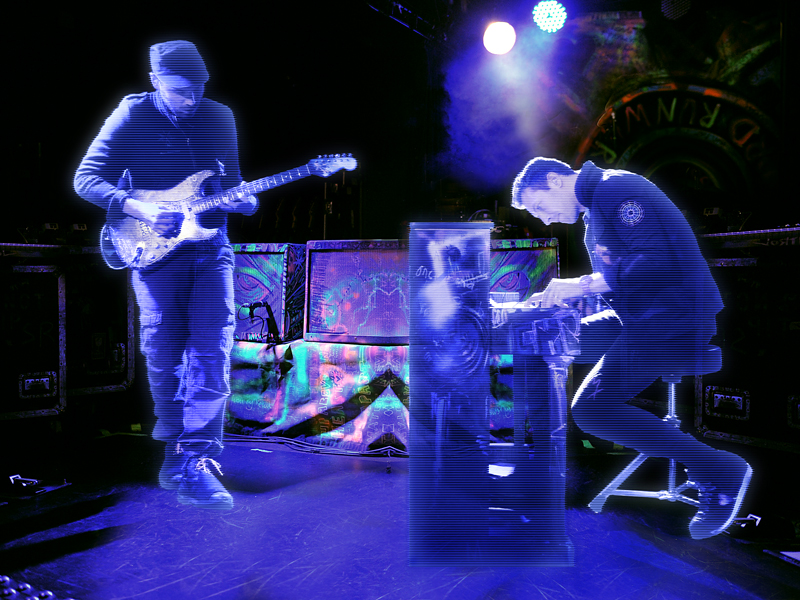
Earlier this week, an underground arts group called the Great Scots met in the basement of Watkins to hold a “concert” before the building is destroyed. This term comes from gatherings that were very popular in the 20th and early 21st centuries, in which large groups of people congregated and listened to “bands” (small groups of people that played instruments and sang songs). The event was a new and interesting experience, and a look back at how people used to listen to music.
The whole concert was very foreign to me. I hadn’t even heard about the event until my friend, who has ties to the organization, happened to tell me about it. He said that real people used to play music for crowds, but all I’ve ever known (and I’m sure many of you feel the same) is listening to my I-Doser in bed to induce REM sleep. The Great Scots used retro holograph technology to bring a popular 21st century band, Coldplay, back to life. This technology was first used in 2012 at a music festival called “Coachella,” when a deceased artist named Tupac appeared to perform on stage. To be honest, I wasn’t aware that people actually watched others play music in this medium, and I doubted whether it would inspire as much of a true feeling of efficiency as my I-Doser.
The collective reaction of the audience was the most interesting part of the night. Students and other patrons threw their bodies around the floor and off the walls of the dank, dimly lit basement as sound blared. They called this movement “dancing,” and I couldn’t help but notice that they exhibited emotion through their movements. The strangest part was when they jumped around and swayed back and forth depending on the song’s rhythm, and changed their facial expression to match their actions.
Though they existed only in hologram form, the members of Coldplay seemed to have some kind of connection with the audience, as if they didn’t care if anything mathematically quantifiable was going on at that moment. The looks on their faces seemed to indicate great passion for what they were doing—just like the looks of the dancing students. The odd thing was, it seemed like a different type of enjoyment than what the I-Dosers usually give me. It certainly felt like there was some sort of explanation beyond my comprehension as to why everyone was enjoying the concert so much.
Admittedly, there was a bit of the communal feeling I usually only see when productivity pills are taken at work. The difference was that instead of working solely for the sake of statistical achievement, these people were simply dancing and singing. One of the oddest moments came towards the end of the show, when after only a few opening notes to a song called “Fix You,” the crowd immediately yelled and cheered in great approval. The crowd loudly sang along with the band (rather than sitting, listening and quantifying sound) and seemed to truly have some kind connection with the people around them, even though they were complete strangers. One line in “Fix You” resonated with the crowd as they sang, “Tears stream down your face / When you lose something you cannot replace.” Some patrons even began crying, as if they were sad as they danced. It was very perplexing to me; how could dancing, which seemed to carry connotations of happiness, mix with the apparent sadness of crying? I’m still not quite sure what they experienced.
During the concert, I couldn’t help but tap my foot. I keep thinking about it, and I felt something beyond just completing my work status reports, but I can’t quite seem to identify what it is. However, I am curious to see if these feelings can be replicated if I attend more of these functions.
Overall, I do think this cause is worth investigating. When I talked to one patron afterwards, she explained that she felt “revitalized” and that she “couldn’t truly explain what [she] was feeling.” I can’t say for sure what went on in that basement, but it was certainly a fascinating event. Something tells me that these concerts will continue to exist—partially due to the unexplainable emotions of those in the room, which seem to take them to far deeper, if not different places, than laying in their bed with I-Dosers and earbuds.







